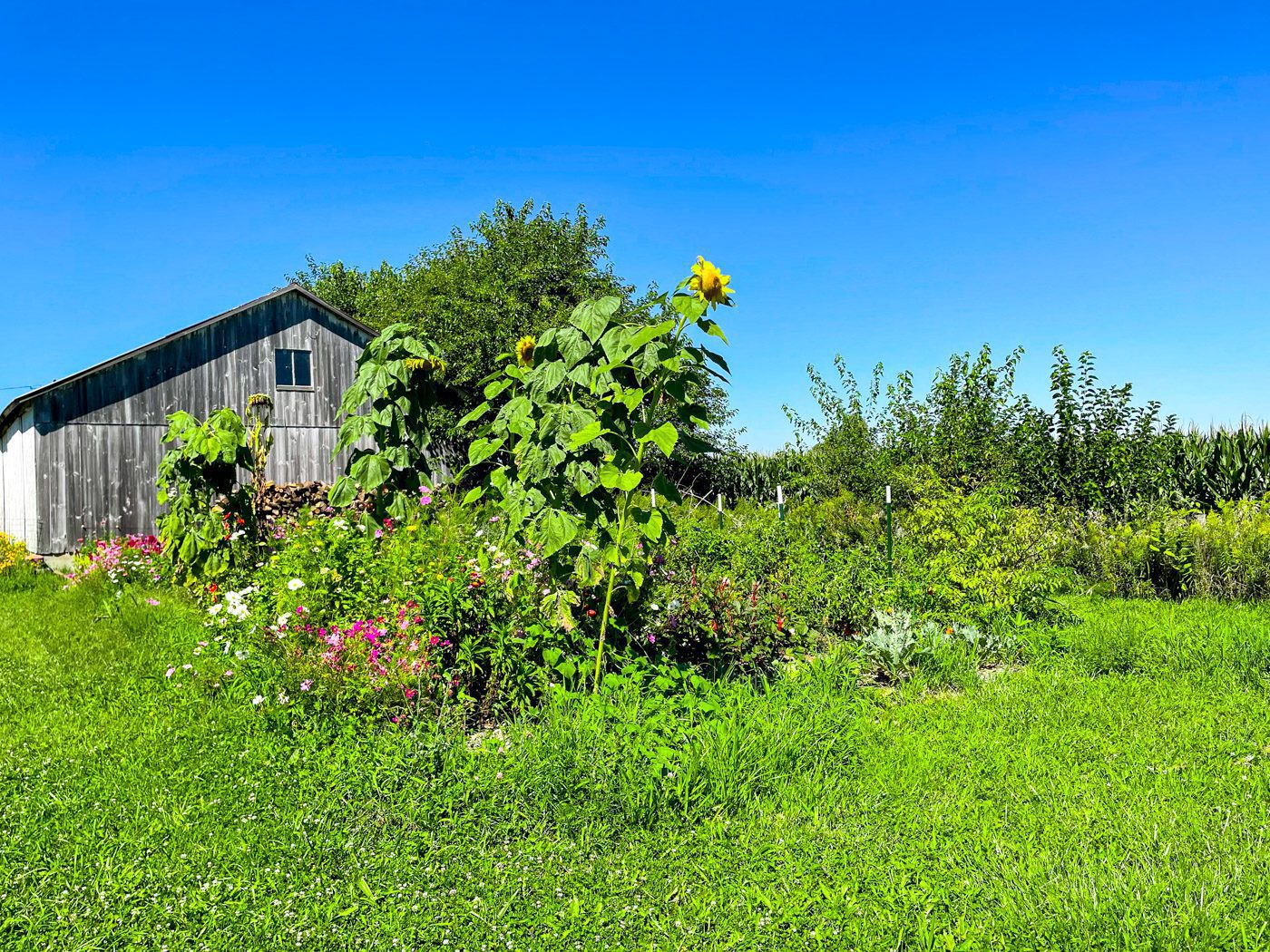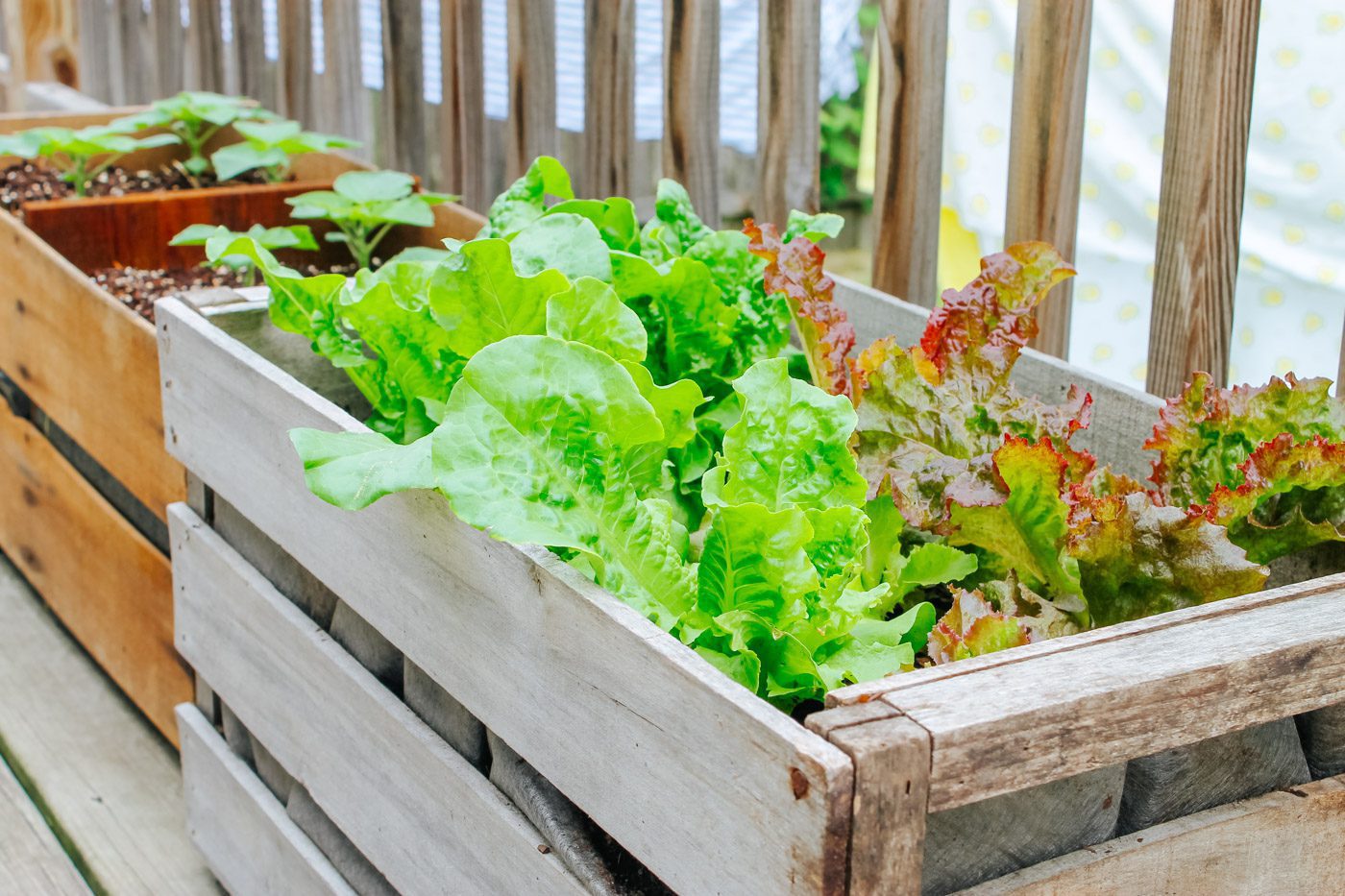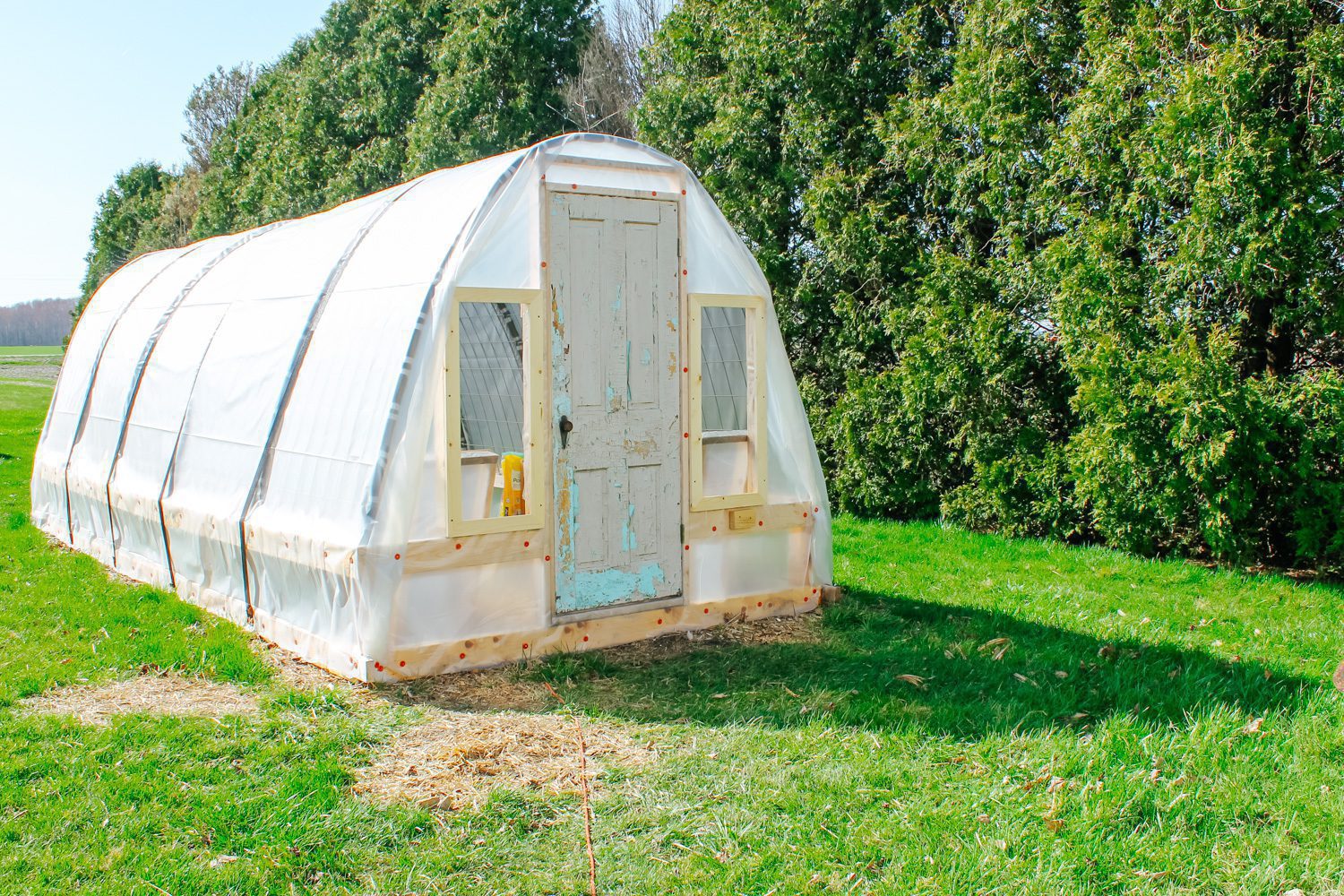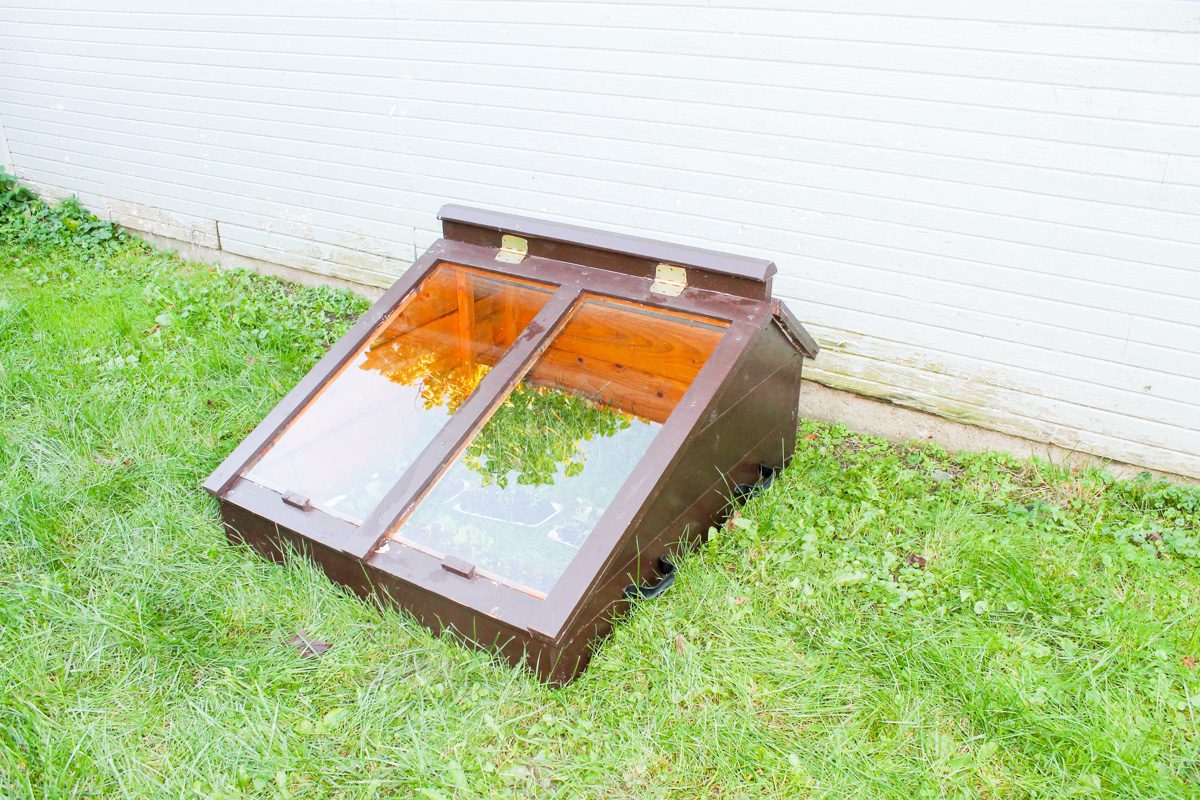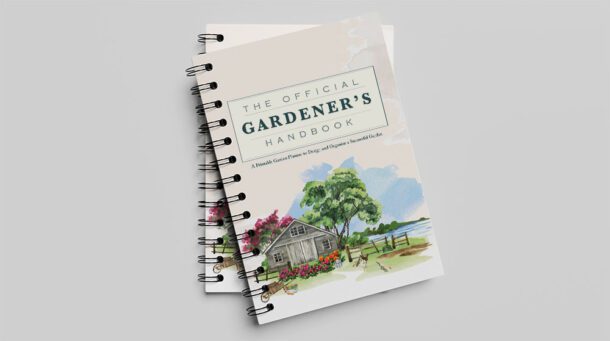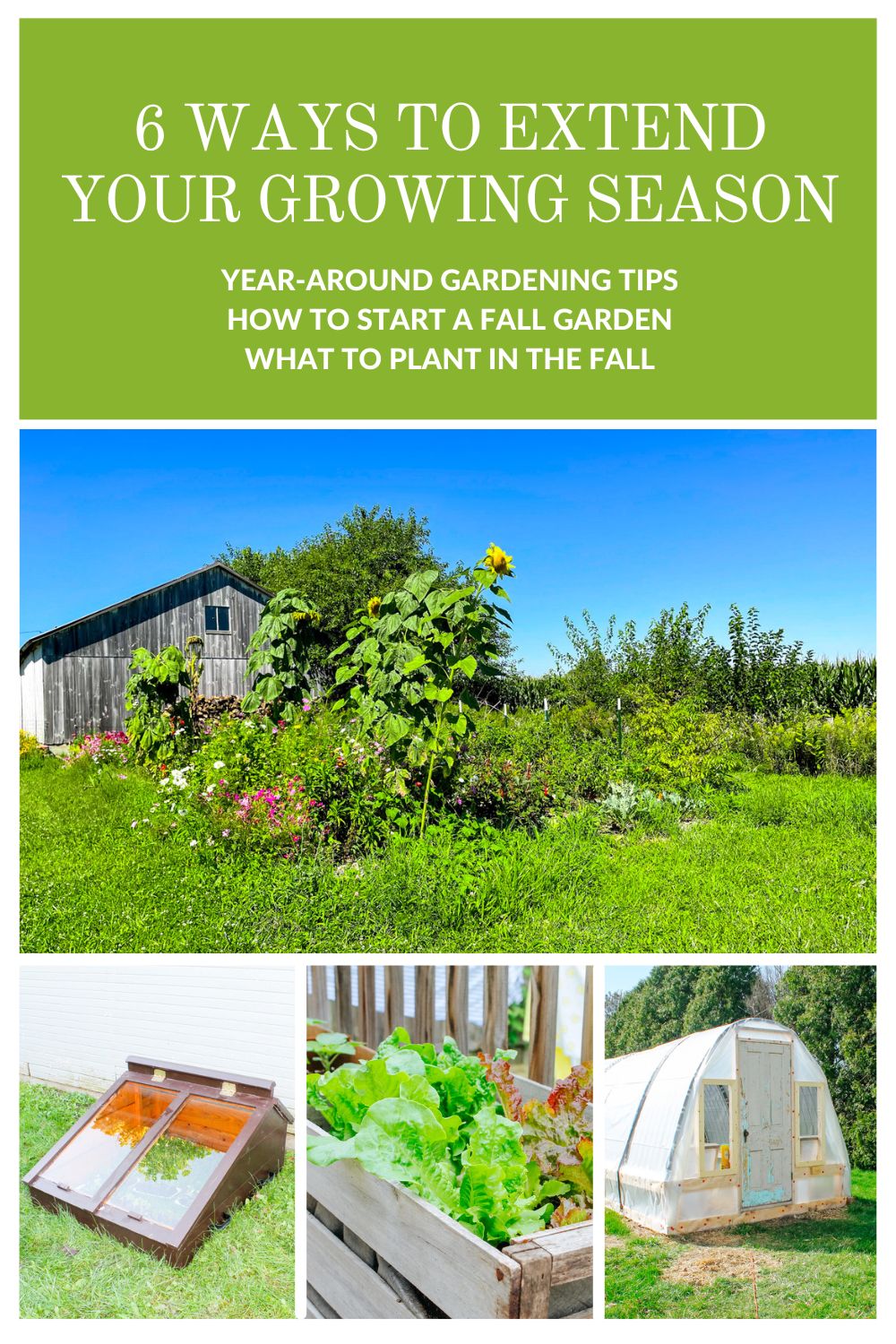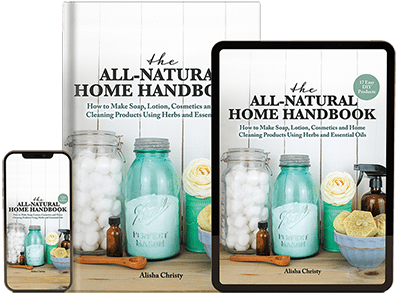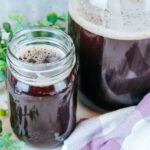Keep homegrown vegetables on your table year-around by extending your growing season. Learn 6 techniques to continue production in the garden including succession planting, building a cold frame, installing a greenhouse, starting a fall garden and more.
The old has gone, the new has come.
As the end of summer draws near and fall quickly ushers in, it only seems natural to put the gardening tools up for the season and call it quits. Logically, one thinks summer is the only time to grow crops. Plenty of sunshine and warm days equals an ideal growing environment.
But that isn’t completely true.
There are plenty of ways to continue gardening well past the seasons end.
Here in Ohio our gardening season begins after Mother’s Day and generally lasts until early to mid October. If we plant in May, we have 4-5 months of growing time, which is great compared to several other northern states in America. Given our decent growing season, we work hard all summer long to harvest and preserve our homegrown veggies and fruits. Come fall, I am typically ready to put the garden to bed as I can no longer stand the thought of canning one more jar of tomatoes or snapping another bean.
However, given the fact that nourishing food is hard to come by in the stores these days and a fall garden is fairly low maintenance, I have found a few ways to extend the gardening season without putting in too much extra effort. Among my favorites are our year-around greenhouse and cold frame, built for growing cold hardy plants. If you’re looking for more methods for growing more of your own food, then here are 6 ways to extend your growing season!
How to Extend Your Gardening Season
1. Succession Plant
The first way to extend your growing season is by using the succession planting method. Succession planting is basically a way to stretch out your harvest by spacing out your planting dates in order to receive a continual bounty of produce throughout the summer season. For instance, one way to succession plant is to sow the same vegetable every few weeks. A crop like lettuce develops quickly in the spring and then goes to seed shortly after. Instead of planting all of your lettuce or greens at once, stagger the plantings every couple of weeks so that you will always have a new crop coming in.
Alternatively, you can succession plant different vegetables. After you have harvested your potatoes, plant some green beans in its place. Or towards the end of the tomato season, plant some cold hardy plants such as kale or swiss chard to replace the tomatoes. The idea behind succession planting is to keep a steady flow of fresh veggies as long as the weather allows.
Best Vegetables for Succession Planting
- Bush beans
- Broccoli
- Cabbage
- Dill
- Swiss chard
- Tatsoi
- Kale
- Lettuce
- Cilantro
- Radish
- Spinach
- Cauliflower
- Carrots
2. Plant a Fall Garden
Come July most gardeners are in the middle of harvesting their summer garden. Few even consider that July or early August is a great time to start planning a fall garden. By planting a fall crop, mid garden season, you will continue to grow veggies through September and October when most plants in the garden are waning. Just imagine being able to go out to the backyard at the end of September to harvest some beans for dinner or a handful of crisp lettuce to make a salad.
Planting a fall harvest is also an excellent opportunity for “second chances”. Consider this: you sowed zucchini seeds into your garden the first of spring. The plant grew great and you began to gather a few fruits from your labor. One day you discover the plant isn’t doing well. Turns out the plant is being eaten alive by the dreaded squash vine borer. You desperately try to destroy those rascals and save the zucchini but in the end, the plant is overcome. Thankfully you still have a chance to harvest more squash if you plant a fall crop. Indeed this is exactly what happened in our garden this summer. The zucchini plant couldn’t be saved but we planted a fall crop in our raised bed and were able to receive a bountiful harvest.
When to Plant a Fall Garden?
Warm soil in your garden is a must for starting a fall garden. If you start your seeds in July or August, the seedlings will thrive! There are an assortment of vegetables to plant for a fall harvest. The best way to decide when to plant your fall garden is to look at the back of a seed packet to determine the maturity date. Bush beans generally take about 50-60 days to mature. If you plant them in July, you will reap the benefits come September. Generally speaking, most fall crops should be planted about 7-10 weeks before the first frost.
Best Vegetables to Plant for a Fall Garden
When selecting a fall crop to plant, choose one that matures quickly and ideally can tolerate a frost. Here are a few of many fall vegetables to plant in your garden:
- Lettuce
- Swiss chard
- Kale
- Tatsoi
- Bush beans
- Cilantro
- Parsley
- Dill
- Cabbage
- Zucchini
- Spinach
- Beets
- Cauliflower
3. Use Floating Row Covers
When the temperature begins to drop in the fall, sensitive plants that you would still like to keep around in the garden may need extra protection. A floating row cover is like adding a blanket over your plants to protect them from frost, light freezes and even snow or fierce wind. A row cover tends to be a low-to-the-ground tunnel built from a variety of materials like fencing wire or pex pipe for plumbing. These covers work best for spring or fall crops and are not meant to be a permanent solution through the winter months.
To create a row cover, build an archway across your plants using rebar and pex piping. Place an arch every 4-6 feet until you reach the end of the row. Cover with thick plastic sheeting (from Home Depot or a greenhouse supply shop) and secure with heavy rocks or bricks.
4. Add a Greenhouse
One of the top benefits of building a greenhouse is that it allows you to extend your growing season. More growing time means more food on your table. By adding a greenhouse to your homestead, you can increase your growing time by 6-8 weeks in the spring and fall. A greenhouse is like a giant cold frame where is traps the suns heat inside, keeping the plants warm while also protecting them from extreme weather. Our DIY cattle panel greenhouse allows my family to grow cold hardy plants during the dead of winter and get a head start on the growing season come spring time.
5. Build a Cold Frame
Gardening doesn’t have to be limited to the warm summer months. Did you know you can garden in the winter even if you live in a northern state? On our Ohio homestead, a cold frame is an essential garden structure. Our wooden cold frame, similar to a miniature greenhouse allows us to expand our growing season by growing crops throughout the winter months. We grow everything from cilantro and kale to claytonia and parsley.
There are a variety of ways to create a cold frame. It can be something as simple as a few hay bales and an old glass tabletop or PVC pipes and plastic sheeting. Our DIY cold frame is reminiscent of frames from the late 19th century. You can learn how we built our cold frame here.
When To Start Your Winter Garden
The best time to start your seeds for your cold frame is in late summer, early fall. If you wait much longer, the rate of plant growth will be greatly reduced due to the lack of light during the daytime. For most areas, November 15 is the cut-off date. If you don’t get your plants in the ground until mid fall, don’t worry, you will still have a winter garden but your plants will remain small until February rolls around, when the daylight has expanded and growth returns.
6. Grow Indoors
Growing plants indoors is one of the easiest ways to extend your growing season. There are a wide variety of veggies and herbs that can be grown inside your home. But indoor plants don’t have to be limited to decorative succulents or culinary herbs like basil or sage. One year my Mom and I grew a miniature tomato plant on our kitchen window sill. What a delight it was to have fresh tomatoes in the dead of winter. All you need to grow plants indoors is a few small pots and a sunny window (south facing is best).
If a window sill garden doesn’t work for you, try growing sprouts! We love growing alfalfa, radish and broccoli sprouts in the winter with our bioset germinator kit from Johnny’s Seeds. They are a great nutrient dense addition to our soups, salads and sandwiches when greens aren’t readily available during the cooler months.
What is your favorite way to extend your growing season? I’d love to hear from you. Share in the comments below!

